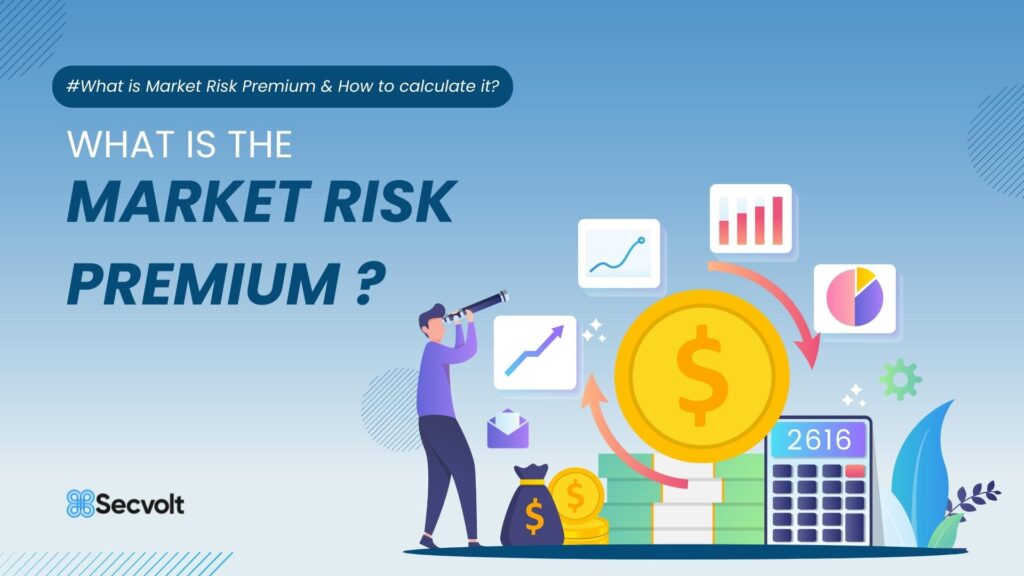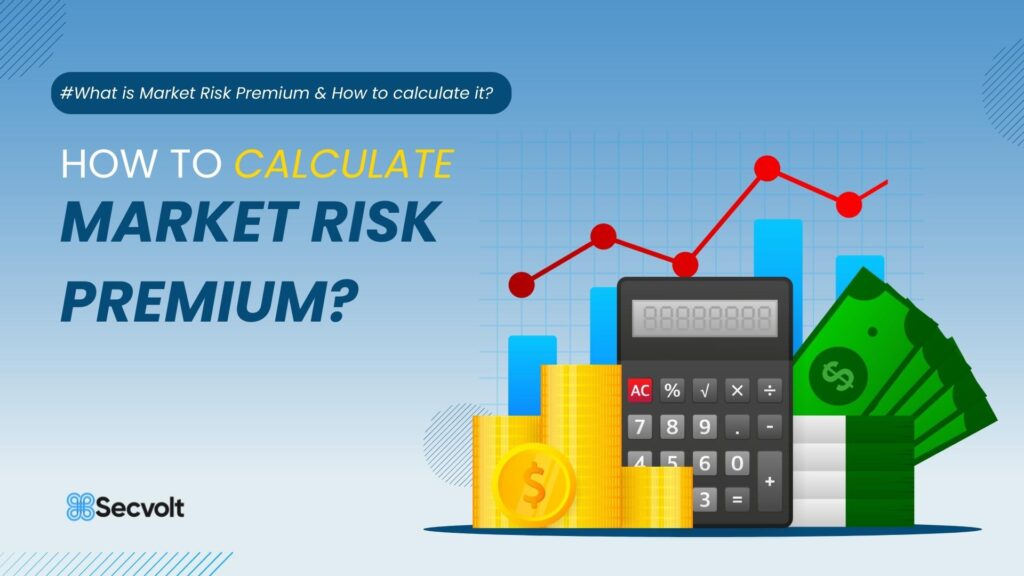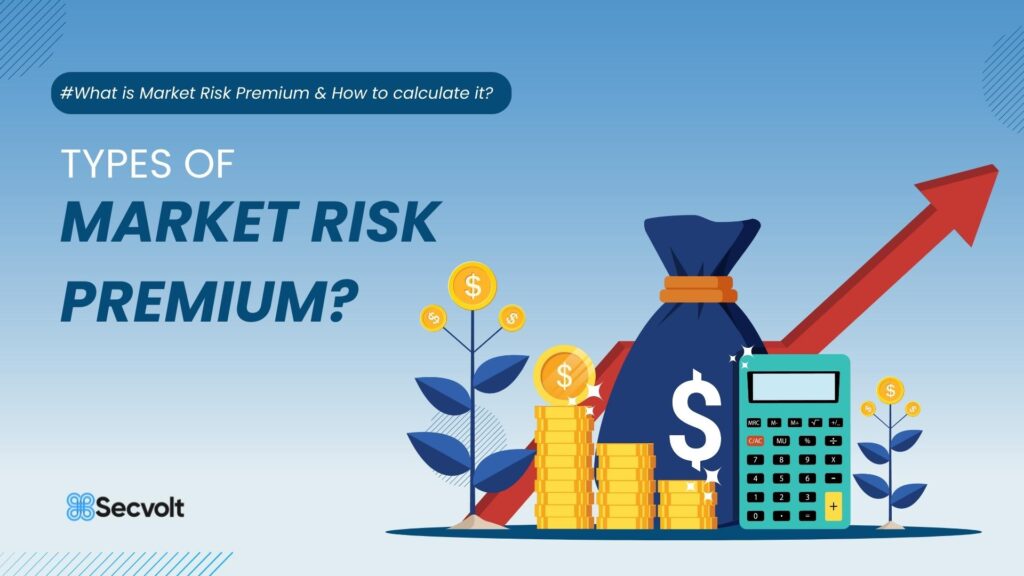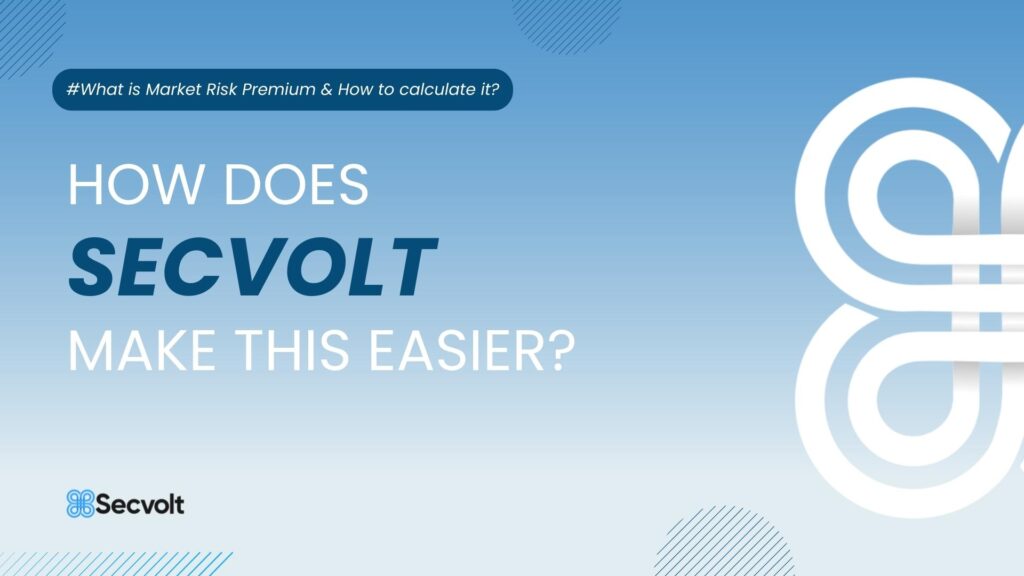
What is market risk premium and how to calculate it?
Remember the saying, no pain, no gain. Well, it fits well everywhere. Be it life, business, finance, investments, relationships, physique, adventures, stock market, or anything. Some pain is a must to gain in life. And usually, the gains are much higher compared to the pain. In plain words, a market risk premium is the rate of return on investments with a higher risk level.
A little bit of adrenaline rush is required to live a healthy life. After all, what is life if not taken with a pinch of salt?
Have you guessed already that we will talk about something related to risk today? Well, precisely, the market risk premium! Equate the pain in the example above with risk, then what would the gain be? Naturally premium! And as you know, the benefit is much higher than the pain. Or it is higher if you take the pain willingly. So today, we will discuss the concept of risk premium, its fundamentals, how to calculate it, its types, & much more.
Without delay, let’s start with understanding the basics of the concept.
We have created a PREMIUM calculator that can help you get an estimate on how your Investment Portfolio may look a year from now, TRY IT FOR FREE. https://calculator.secvolt.com/

What is the market risk premium?
We all know there are different types of investments. If we ignore the technical aspect of it, even if someone lives under a rock, they would still know about some ‘kinds’ of investment. Some are the kind that gives you higher returns. But these come with a higher risk level as well. Others are the ones that offer security, but the returns are also proportionately lower. Now, where does market risk premium come into the picture? In plain words, it is the rate of return on investments with a higher risk level.
In the two categories, we talked about in the previous paragraph, the rate of return on the latter, the ‘safer’ investment, is known as the risk-free rate for obvious reasons. And in the other category, the rate of returns is known as the expected return.
What we want here is the difference between both. The market risk premium is the difference between the expected rate & the risk-free rate.
Now, you have a definition; you know how to explain it in words. Now, let’s look at it in numerical terms with the help of an example.

How to calculate market risk premium?
As discussed earlier, it is the difference between the expected and the risk-free rate. Also, don’t forget that the expected return is generally higher than the risk-free rate, as discussed. So, the market risk premium formula would be:
Market Risk Premium (MRP)= (Expected rate of return)- (Risk-free rate).
For example, the expected return on stocks is 10% currently, and on bonds is 2.5%. As we can see, the expected rate of return on stocks is higher than the government security bonds. You know it is because bonds are a secure, risk-free investment option. Now, we need to calculate how much premium we will be getting.
So, putting the figures in the formula, we get the following equation:
MRP= Return rate on stocks- Return rate on bonds
MRP= 10%-2.5%
Thus, Market Risk Premium (MRP)= 7.5%
So, now we have a figure. Thus, anytime we invest, this is how we can know the premium rate on it.
Now you know what the basic concept is and how to calculate it. Now, let’s discuss the difference between risk premium and our topic for today.
If you need some ideas about what to read next, here they are:
- Benefits of Working with a Wealth Management Company
- Best Investments for Roth IRA in 2022
- How to Invest $500K?
Risk premium and market risk premium~
Now, though they sound similar, there is a little difference between them, a difference that converts into a not-so-little difference in the long run. You know about the latter. Thus, let’s discuss what risk premium is first. And then we can head to the difference in both.
The rate at which shares & stocks accrue a return is called the equity risk premium. It is used for stocks & shares, and thus the word equity. Also called the expected rate of return, it is generally higher than the risk-free rate.
So, now where is the difference? The difference is the ‘additional’ that comes with the market risk premium. The risk premium is the rate of return on stocks, but here, the whole concept is of the extra returns you make on risky investments, not the risky ones. The addition, surplus, is what adds to the margin here.
You know the fundamentals, the calculation, and the differences. Let us discuss the types now.

Types of Market Risk Premium~
Over the years, the concept of premium and risk premium has evolved into various types. The bases for such classification would be the calculation, concept, stakeholders, and many more. Some other factors affect the premium, such as legal, technical, external, and international factors. The following are the types of market risk premiums:
- Historical market risk premium- As the name suggests, the premium is calculated based on the historical performance of the return. It is different for different instruments. To comprehend the activity, S&P 500 acts as an indicator generally.
- Required market risk premium- We need to focus on the term ‘required’ here. Why is it required? It is because it is the minimum rate that needs to be present. It implies that if the rate is lower than this, it is highly improbable that anyone would invest. It can differ from one investor to another.
- Expected market risk premium- Depending upon your degree as an investor, the expectations from an investment differ. Based on these expectations, the expected additional returns also vary. Thus, the rate expected is known as the expected market risk premium.

How does Secvolt make this easier?
Think of a company that offers a minimum of 42% returns at zero percent of the risk. Sounds like a dream? Well, it is a reality now. With the finesse of an algorithm and the ever-experienced team, Secvolt keeps you in a win-win situation with the whole risk & premium thing. And how do we do that? First, we give you the privilege of selecting your desired risk level. And secondly, irrespective of the degree of risk you choose, the surplus you gain is the best you deserve! As said, when at a risk-free level, if you earn a market risk premium of a minimum of 42%, imagine what we are yielding to people who trust us with even one percent of the risk. Take a look for yourself (https://secvolt.com/) & leave all your financial worries to us.





